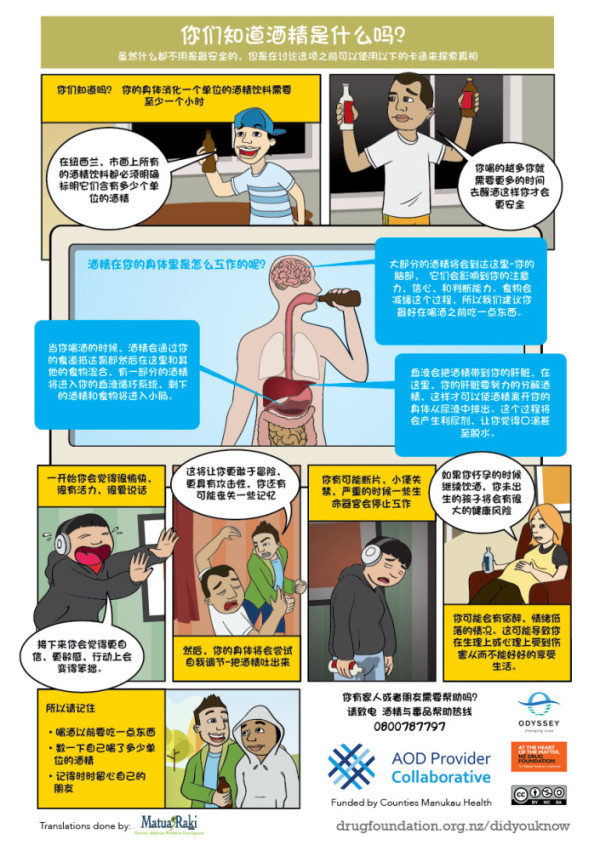This short video about alcohol is for New Zealand parents, caregivers, whānau and those working with young people to understand basic facts about drinking. Don't stop here, start a conversation.
Did you know that…one standard alcoholic drink takes at least one hour to leave your body. In New Zealand all alcoholic drinks must be labelled with the standard drinks they contain. The more you drink, the longer it takes to be sober and safe.
When you drink, alcohol goes into your stomach where it mixes with any food and some alcohol goes into your bloodstream. The mix then moves to your small intestine.
Most of the alcohol heads to the brain from here, affecting your co-ordination, confidence and judgement. Food slows down this process, which is why eating before you drink is a great idea. The blood then moves to your liver which works hard to get rid of the alcohol, breaking it down so it can leave the body in urine. It’s also a diuretic, making you thirsty and dehydrated.
First you can get flushed, energetic and talkative. Next you could get more confident, emotional and un-coordinated. This can lead to risk taking, memory loss and aggression. Then your body tries to rid itself of the alcohol through vomiting. Finally you can experience blackouts, wet yourself, and your vital organs start to shut down.
Drinking a lot can cause hangovers, emotional stress, make it harder to study, play sports, enjoy life and lead to physical and mental damage. Also, drinking while pregnant can cause big problems for baby.
So, remember to:
- Eat before you drink
- Count the standard drinks
- Always look out for your mates.
Did you know...
that teenage bodies handle alcohol differently from adult bodies? They are less sensitive to the physical indicators of being drunk, such as slurring words and swaying. At this point a young person is in the later stages of drunkenness and should be monitored closely. They may need medical help.
For some young people, drinking under supervision can build false confidence, meaning they drink more than they otherwise would in unsupervised and less safe situations. Have a think about the world through their eyes. What do you think they might see as normal behaviour around alcohol?
Video
Turn on Samoan subtitles in the video at the top of the page via the closed caption (CC) menu of the YouTube player controls.
Comic poster

Video
Turn on Tongan subtitles in the video at the top of the page via the closed caption (CC) menu of the YouTube player controls.
Poster

Resources
Request printed posters in any language on our Resources website.
This includes the complete Did You Know Conversation Guide which you can also view and download right now: A guide to conversations with young people about drugs and alcohol (PDF, 2.7 MB).
About Did You Know
These tools and resources were initiated by the Counties Manukau AOD Provider Collaborative and the New Zealand Drug Foundation with support from Odyssey. Expert advice and participation from young people were used in their development. Creative by Mohawk Media.

Did You Know is licensed under a Creative Commons Attribution-NonCommercial 4.0 International License.





